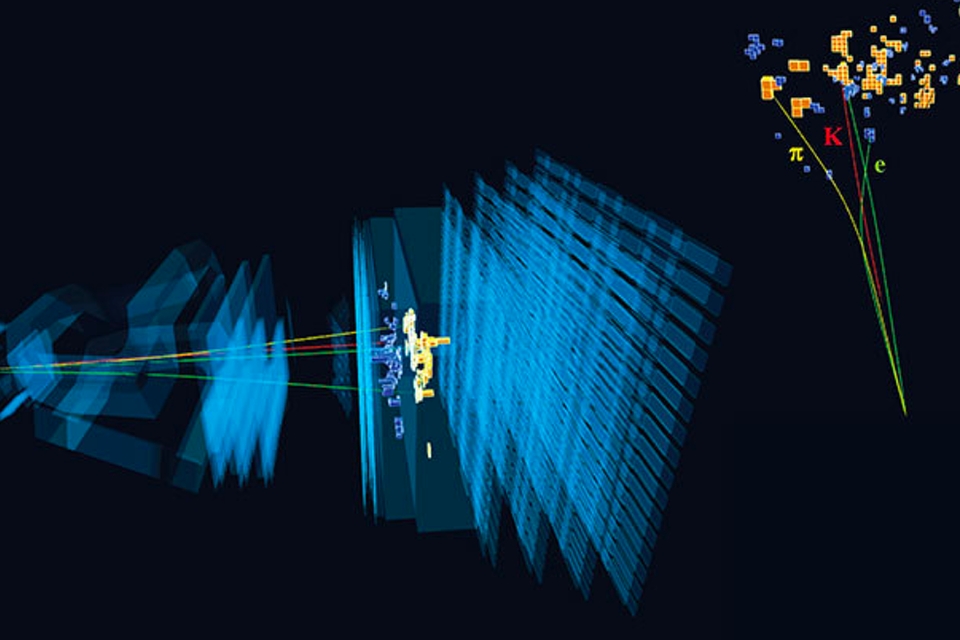
The data cannot be explained by our current laws of nature.
There is a huge particle accelerator on the French-Swiss border – underground – the Large Hadron Collider (LHC for short). Here, subatomic particles are accelerated at nearly the speed of light and then collided with each other. These collisions result in the formation of many new particles and are used by physicists to find out which particles are there and what properties they have.
Standard model
The findings can then be used to test the Standard Model. This is a theory of particle physics that describes the forces and particles that make up all matter. The Standard Model is regarded as the best theory in particle physics to date. But there’s one problem: the universe has a few mysteries that we can’t fathom even armed with the Standard Model. For example, the Standard Model cannot tell us what dark matter consists of. Those mysteries therefore suggest that our Standard Model is incorrect or – at best – incomplete. And so researchers are eager to defy this model, for example by having subatomic particles collide at unprecedented speeds. But in recent decades, the Standard Model – which saw the light of day in the 1970s – has manfully held its own.
No wonder there is great excitement among physicists now that, with the help of the Large Hadron Collider, there is finally a glimpse of new – that is, unexplained by the Standard Model – physics seems to have been caught. “We just shook when we saw the results,” said study researcher Mitesh Patel. “We were so excited. Our hearts really beat a little faster.”
beauty quarks
The exciting observations that Patel talks about were made during the so-called LHCb experiment, which specifically investigates so-called beauty quarks (a quark is a subatomic particle). The Standard Model predicts that these beauty quarks decay to electrons just as often as to muons (according to the Standard Model nothing more than a heavier version of electrons). But scientists have now found evidence that beauty quarks are more likely to decay into electrons. Not only does it conflict with the Standard Model, but it also points out that there are previously unseen particles involved that cause the beauty quarks to decay more often into electrons. “The result intriguingly hints at a new fundamental particle or fundamental force that interacts in a very different way from the particles known to us today,” said study researcher Daniel Moise. And ensures that beauty quarks decay more often to electrons.
Do not cheer to early
It is, however, still too early to say with certainty that the Standard Model is faltering and a new physics is within reach. In particle physics, a discovery only occurs when there is a deviation beyond ‘5 sigma’. That means there’s only a 1 in 3.5 million chance that the observations are coincidental and don’t hint at new physics. The data that researchers have now presented does not yet meet the requirement; there is a deviation of 3 sigma. That means there is a 1 in 1000 chance that the observations are coincidental. “While we have yet to wait for confirmation of these results, I hope that one day we will look back at this moment and see it as a turning point,” said study researcher Michael McCann. “A moment when we started to answer some fundamental questions (such as about the composition of dark matter, ed.).”
It is now a matter of repeating the measurements with the Large Hadron Collider and finding more evidence that forces are at play here that are not taken into account in the Standard Model. In addition, researchers hope that other particle accelerators will also try to repeat the experiment. If the measurements are confirmed, that would be a huge breakthrough. But the physicists involved – over 800! – prefer not to get too ahead of things. “It’s too early to say that this is really a departure from the Standard Model,” Patel emphasizes. But at the same time, it’s audibly difficult for Patel and colleagues to keep a cool head in anticipation of more data. “The potential implications are so great that this is the most exciting thing I’ve experienced in my 20 years of research.”
Source material:
“New result from the LHCb experiment challenges leading theory in physics” – Imperial College London
““Cautious Excitement”: LHCb Experiment May See Glimpses of New Physics” – Nikhef
Image at the top of this article: CERN